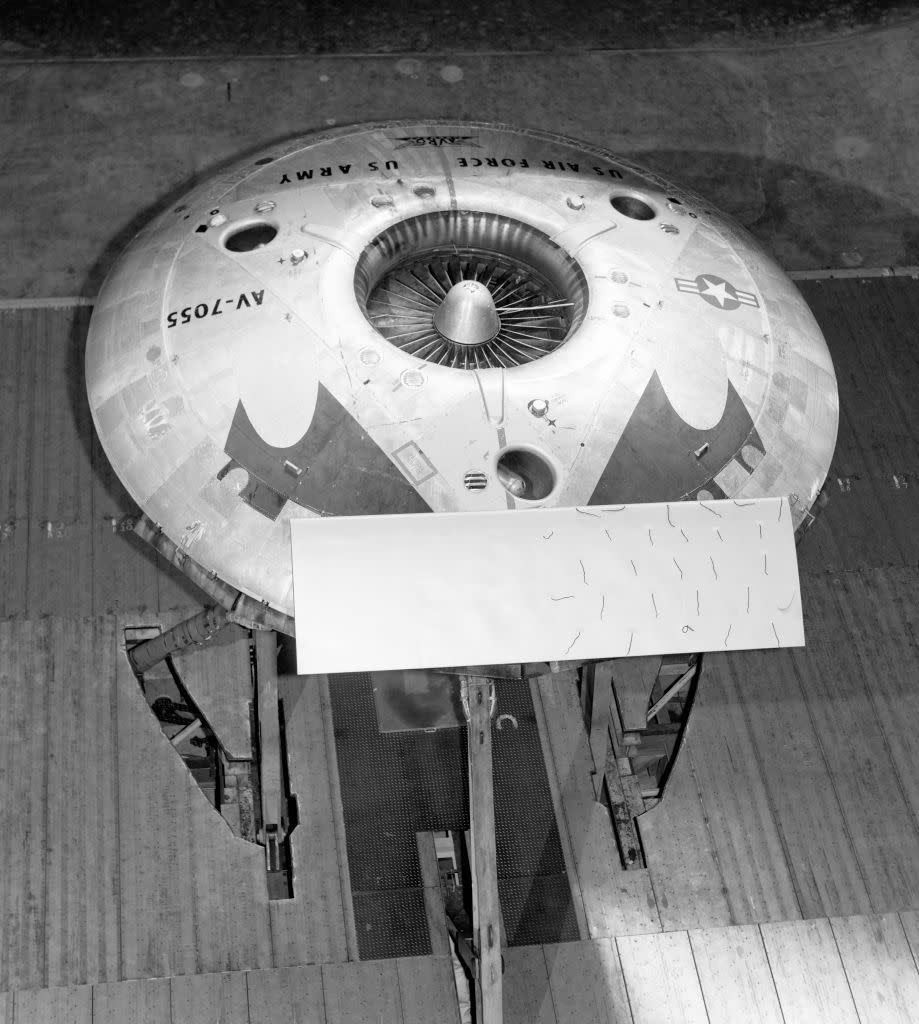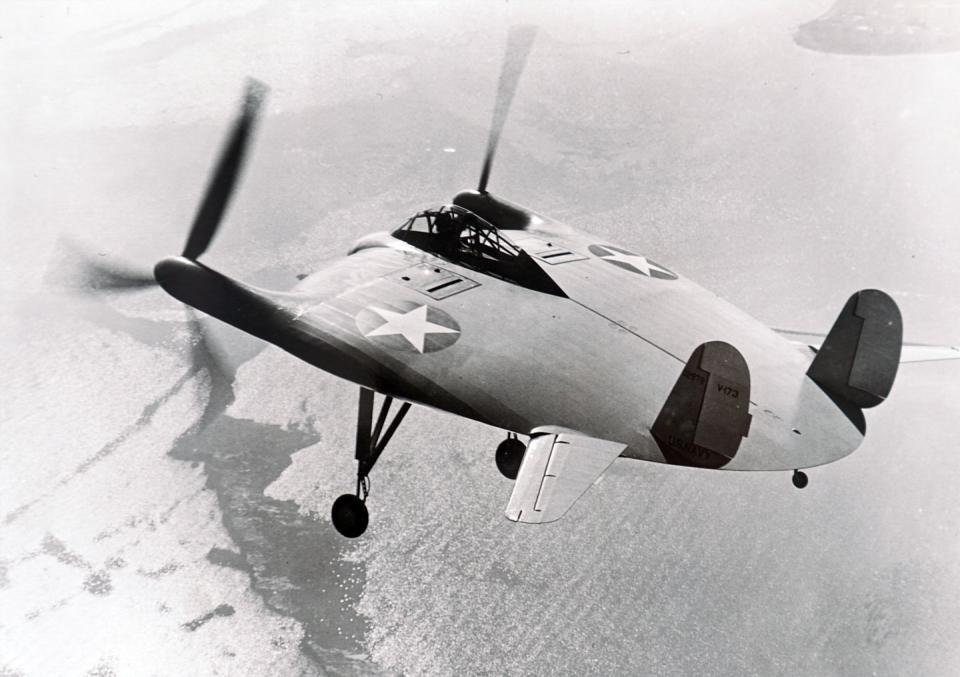Humans Have Tried to Build a Real Flying Saucer Many Times, But Every Single One Failed
Everyone is familiar with the concept of the flying saucer, but the iconic shape still hasn’t spawned a real, working aircraft.
That hasn’t stopped many aircraft designers from trying to get UFO-like aircraft to fly.
So far, none of the designs has worked.
The flying saucer is one of the most recognizable aircraft ever—more famous, perhaps, than even a fighter jet or bomber. Unlike those planes, of course, the flying saucer isn’t technically real. But that hasn’t stopped scores of aircraft designers over the decades from trying to make the iconic disc actually fly.
No such luck yet.
✈ You like badass planes. So do we. Let’s nerd out over them together.
The aviation magazine Hush-Kit recently examined the top 10 real attempts at flying saucers. These clever designs have two things in common: they all used a disc-like shape, and they all ultimately failed.
A disc-shaped aircraft typically includes a circular wing and a regular or blended fuselage. In some cases, the fuselage is fully embedded into a thick wing, producing a true saucer-like appearance with just a few cockpit canopies sticking out of the top.

The disc shape looks cool, but as Hush-Kit explains, it poses major problems. When a disc-shaped aircraft generates lift, the circular wings create a lot of drag, which the aircraft needs to overcome to achieve flight. This has implications for the aircraft itself (particularly vibration) and increases the amount of power necessary to get the plane airborne. Flying saucers also tend to place the pilot toward the center of the aircraft, limiting visibility below the airplane.
Some of the aircraft on Hush-Kit’s list, like France’s Couzinet Aerodyne and the Canadian Avro Avrocar (pictured above) looked exactly like traditional flying saucer UFOs. The closer the resemblance between the human and (presumably) alien craft, the less likely the human plane was successful.

The U.S. Navy-funded Vought V-173, seen above, and its descendant, the Vought XF5U-1, were the most successful of the “discoidal” aircraft. The Navy liked the idea of a compact fighter aircraft with stubby wings to operate on crowded carrier flight decks. The service envisioned the XF5U-1 as a single-pilot aircraft equipped with six .50-caliber machine guns and two 1,000-pound bombs. The plane would have a maximum speed of 482 miles per hour at 30,700 feet—impressive statistics for a wartime piston-powered fighter.
But the XF5U-1 rolled out of the factory in June 1945, arriving too late to serve in World War II. Jet-powered aircraft were much faster than traditional piston-powered planes, and the affectionately dubbed “Flying Pancake” became obsolete practically overnight. As defense spending wound down, the Navy had to choose between a variety of aircraft it had under development. The Pancake failed to make the cut.
The inherent difficulty in producing a “flying saucer” aircraft means we might never see a human-designed discoidal aircraft. But as the full Hush-Kit list makes clear, it’s not for lack of trying—it’s just really damn hard. If you do happen to see a flying saucer, don’t be surprised if the pilot is literally out of this world.
🎥 Now Watch This:
You Might Also Like

